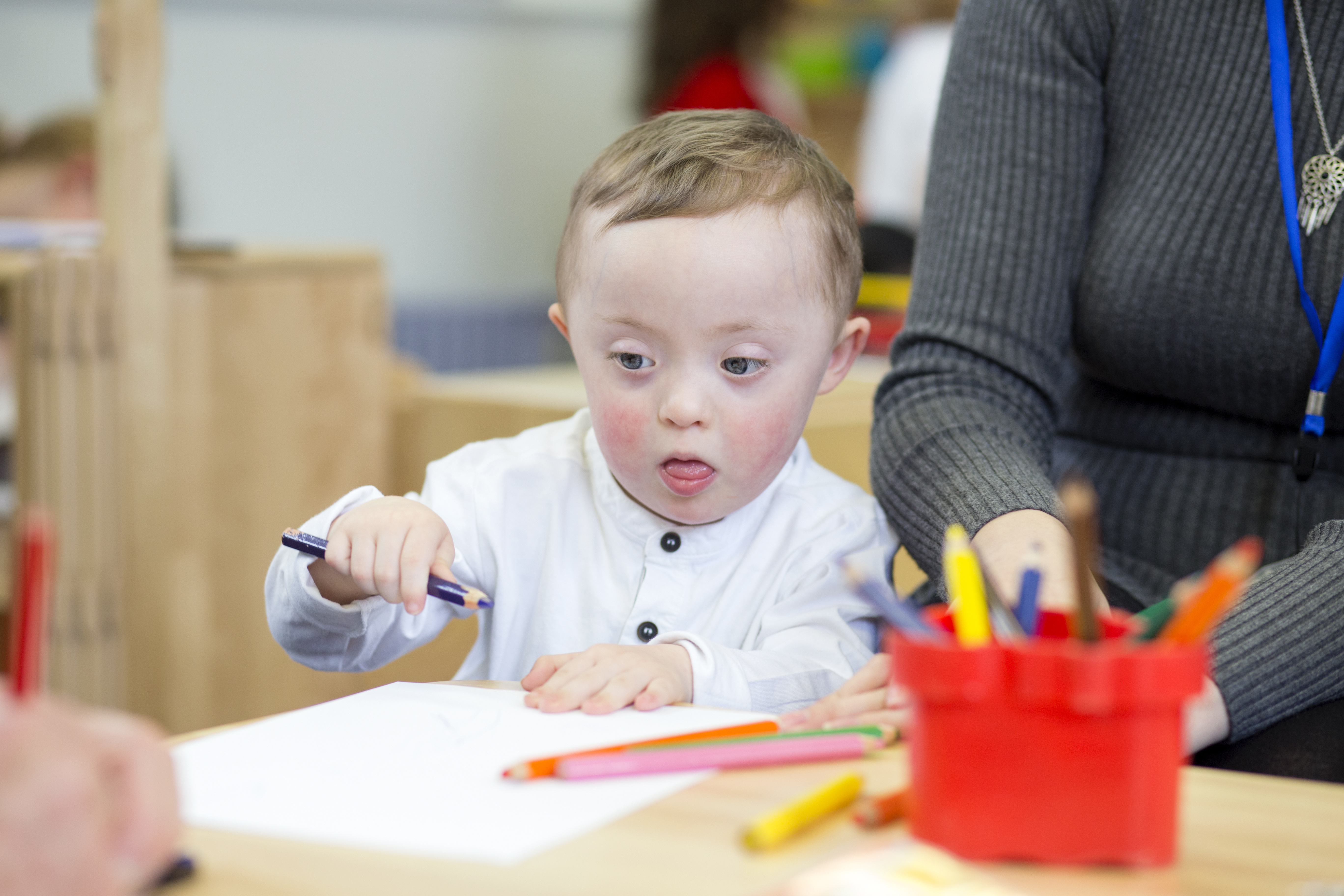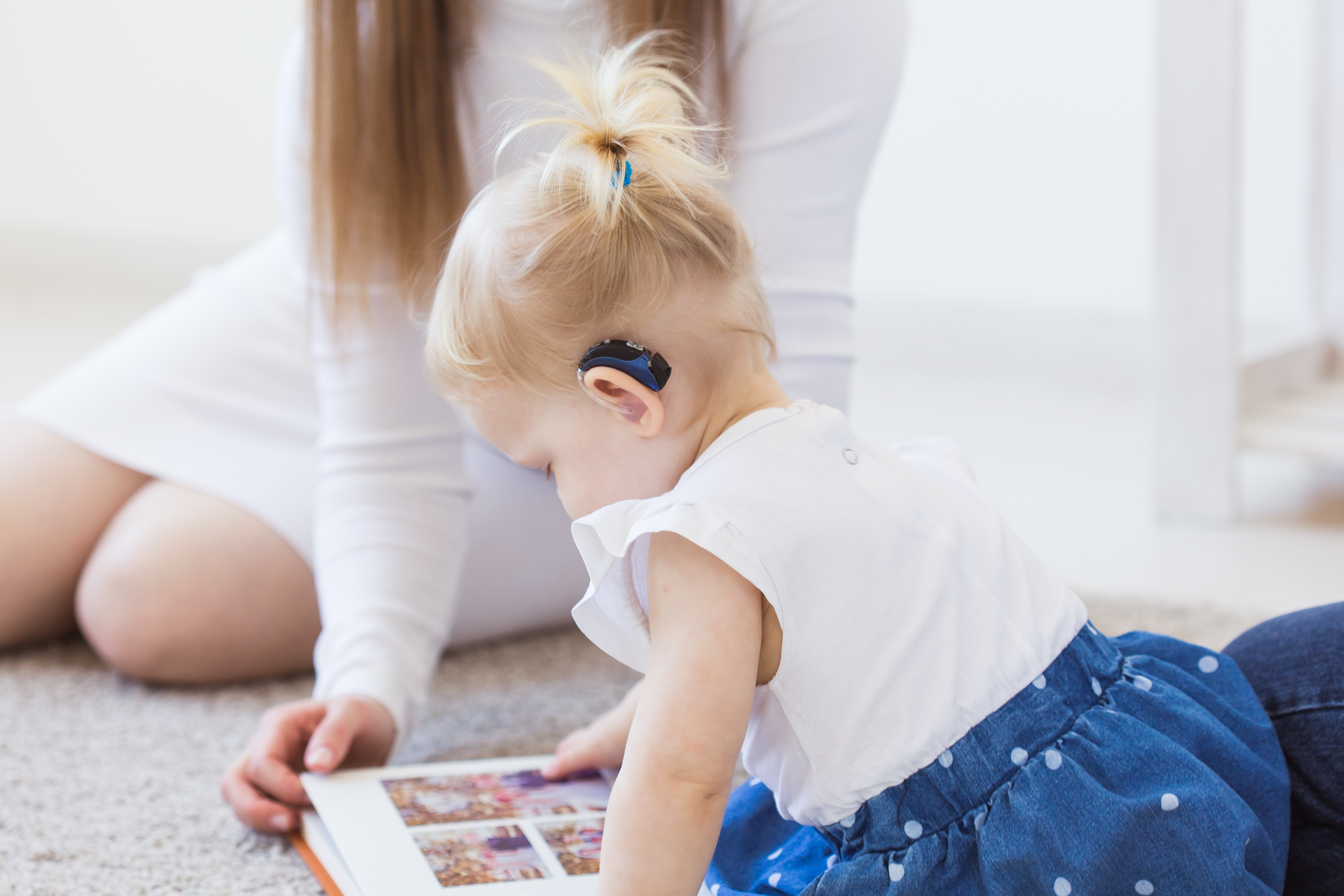Diagnosed conditions which can affect children’s speech, language and communication

If a child within your setting has a diagnosed condition, it can also affect the way they develop their speech and language. There are obviously many different conditions, but the following are some of the most common ones, although it is important to note that each child will still react and develop in different ways.
Autism
Children with Autism Spectrum Disorder (ASD) can find it hard to communicate with other people and often tend to show less interest in others during the first 12 months of life. They might be slower to develop their language skills, have no language at all or have significant problems with understanding or using spoken language. This is often because they are more focused on things going on around them, and therefore miss opportunities to develop their communication skills.
They also sometimes have difficulty communicating non-verbally, such as through hand gestures, eye contact and facial expressions. However, most children with autism do learn to talk or communicate in other ways, for example using pictures or symbols.
Autism Spectrum Disorder is usually diagnosed by a multi-disciplinary team, including a paediatrician.
Additional information
National Autistic Society provides a wealth of information and advice for professionals about autism, including conferences, training courses and good practice guides.
Developmental Language Disorder
This is when a child or adult has difficulties understanding spoken language and may also have difficulties putting their thoughts into words. It affects approximately 1 in 15 children and can have an impact on the development of literacy skills and learning, friendships and emotional wellbeing. It can persist into school age and possibly into adulthood.
It is diagnosed by a Speech and Language Therapist and early intervention and support from professionals, including therapists and teachers, can make a real difference.
Additional information
AFASIC is a national charity supporting parents of children with speech, language and communication difficulties, whilst also providing a range of training materials and free downloads for professionals.
Raising Awareness of Developmental Language Disorder (RADLD) provides a range of different resources to help parents and professionals build their knowledge of this condition. 
Down’s syndrome
Most children with Down’s syndrome will learn to speak, although this may be at a slightly slower rate. They will usually be able to understand language and have the desire to communicate well, before they are actually able to speak. They can often be susceptible to glue ear, which presents an additional challenge for children. It is recognised that a total communication system, which uses sign language and / or pictures alongside spoken language, can really help a child’s speech, language and communication development.
Down’s syndrome is usually diagnosed during pregnancy or at birth.
Additional information
Down’s Syndrome Association provides a wealth of information, advice and training for people with Down’s syndrome, new parents, families / carers and professionals.
Down Syndrome Education offers information, advice, support and training for children with Down’s syndrome, including on speech and language.
Glue ear
This is one of the most common childhood conditions, affecting 1 in 5 pre-school aged children. It occurs when the middle ear becomes filled with sticky fluid and is often linked to ear infections. As children can have repeated episodes of glue ear, it is often missed during hearing tests, as they can hear normally between episodes.
As it can cause temporary deafness, glue ear often delays speech development in young children, as they miss some of the sounds in words or find it harder to pay attention to people speaking. However, once they have recovered from the condition, most children will catch up with their speech development. If you are concerned about a child’s hearing or if they suffer from frequent ear infections, the parents should be encouraged to talk to their GP or Health Visitor.
Additional information
National Deaf Children’s Society provides useful information and advice on glue ear in children.
Hearing impairments
A hearing impairment can make developing communication skills more of a challenge. However, in most cases, there is no reason why a hearing impaired child can’t develop language and communication skills, with the right support and encouragement. Some children may need technology to help them, for example hearing aids or implants, while others may learn a different language, such as British Sign Language, Signalong or Makaton.
Hearing impairments can often be picked up soon after birth, but sometimes they are not recognised until later.
Additional information
National Deaf Children’s Society offers a fantastic range of advice, information and resources to help you support language and communication.
Selective mutism
This is a relatively rare anxiety disorder, diagnosed by a Speech and Language Therapist, where children can speak fluently in some situations, but remain silent in others. It often affects young children and is normally short term, for example when they’re anxious about starting school or going into hospital. In rare cases, it can continue for longer and last right through a child’s school life.
Children affected by selective mutism usually don’t talk to their teachers and can often be silent with other children too, although they do communicate non-verbally. There can also be other combinations of non-speaking, such as not speaking to specific family members. There are often no other identifiable problems and the child will talk freely at home or with close friends. They will usually still make age-appropriate progress at school, in areas where speaking is not required.
Additional information
SMIRA (Selective Mutism Information & Research Association) provides a range of information and resources, including training courses for parents, older children, adults and professionals.
Stammering
It’s normal for a child to repeat words and phrases and hesitate with "um’s” and "er’s”, when they’re sorting out what to say next.
However, if a child is stammering and one or more of the following factors are present, a referral to speech and language therapy should be considered:
- There is a professional or parental concern
- The child is showing signs of frustration or being upset
- There is a family history of stammering or speech and language difficulties
- The child has had other difficulties with speech and language
- Their general behaviour is causing concern
- There are different languages spoken at home and the child is stammering in their first language
If you believe a child would benefit from seeing a Speech and Language Therapist, a referral can be made by your setting / school or the child’s parents, GP or Health Visitor to Wye Valley NHS Trust’s Speech and Language Therapy Services.
Additional information
The British Stammering Association (known as Stamma) has a lot of helpful resources for professionals, including leaflets, films and a free helpline.
Wye Valley NHS Trust has useful information and advice on stammering and dysfluency in children.
Number 6: Good practice
Create a visually supportive environment within your setting.
If children are having difficulty understanding what is said to them, find it hard to follow routines or have limited spoken language, then using visual supports is crucial.
A school nursery made changes to their environment, in order to increase its visual cues. They:
- Made a simple visual timetable showing the basic nursery routine with photos and referred to it throughout the day
- Made additional photo cues to support handwashing, fetching aprons for messy play, lunchtimes and getting ready to go home
- Ensured all toy boxes were clearly labelled with a picture of the contents
- Used props during storytelling
- Used objects of reference to show the children what was happening next and to help them make choices
Number 6: Great idea
Kate, a childminder, was supporting Victor, a child with speech, language and communication needs, who had very limited spoken language. He was beginning to learn Signalong, so Kate decided to learn some signs, so she could communicate more effectively with him.
The first time Kate signed back to Victor, he looked so surprised and really pleased. She started by adding some Signalong to simple rhymes and songs and gradually added a few more signs each week. She asked Victor’s dad which signs he was using at home and learnt these too.
Kate began to continuously use Signalong for key words, as she realised other children were also benefitting and it improved their communication with Victor.
